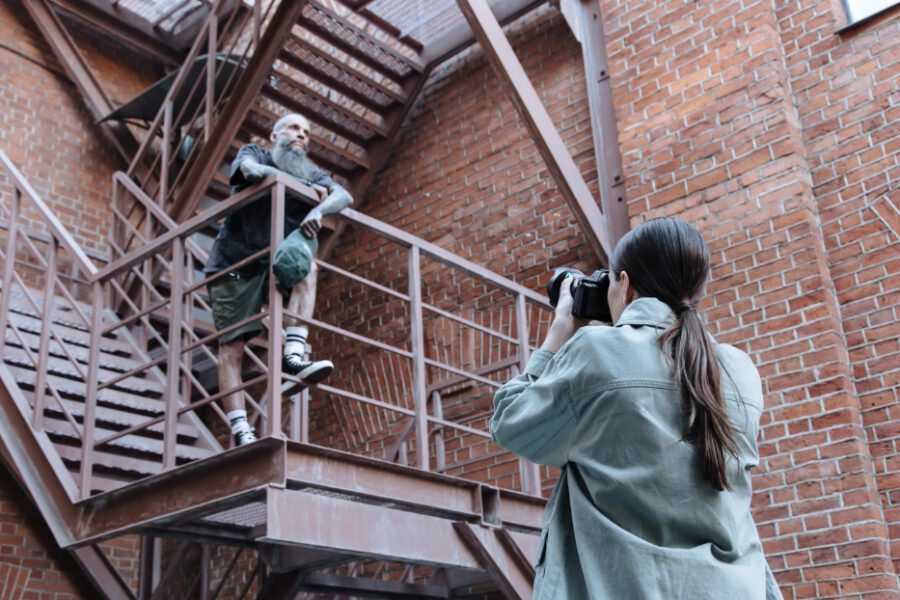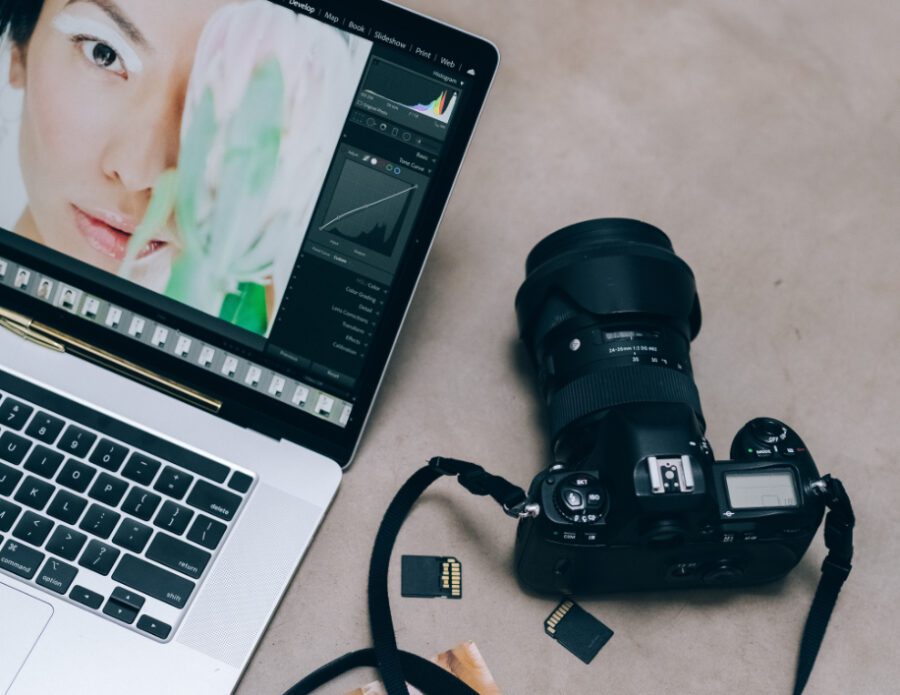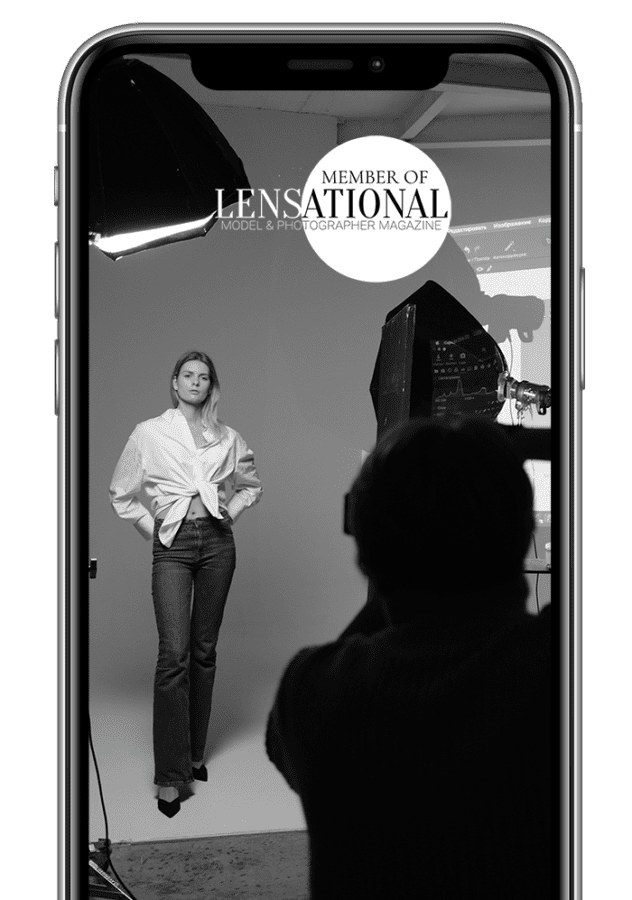Starting your own photography business can be an exciting and rewarding adventure, but it can also be a daunting one. Before you embark on this journey, it’s important to be aware of the top things you need to know to ensure your success. From developing a solid business plan to building a strong online presence, this article will provide you with essential tips and insights to help you start and grow your photography business. So, let’s dive in and explore the key factors that every aspiring photographer should consider before starting their own photography business.
We have photographers from a whole range of different sectors – portrait photography, landscape, sport, fashion photography, fitness photography, wildlife, wedding and more. We asked one simple question:
What things wish you knew when you started photography business?
- Learn how to price your photography
- Get to know your clients
- Understand client perspective
- Give Excellent Customer Service
- Shoot RAW
- Invest in storage
- Shoot in Manual Mode
- Read everything as a business email
- Be transparent about portfolio-building prices
- Learn about business and marketing
- Have realistic expectations
- Be patient and persistent
- Don’t follow trends
- Take your camera everywhere
- Don’t let gear lust distract you from what really matters
- Invest in quality tripod
- Get insurance
- Get out of your comfort zone
- Batch edit
- You’re not just creating images – you’re building a brand
- Market yourself
Learn how to price your photography
“When you price yourself at a sustainable level people book you based on your style and talent not your price.”
“To build a brand, business and presence one step at a time and not resort to desperation techniques to get clients. Things take time but most of us are impatient and then do wrong things (like low prices) that can haunt us.”
As a skilled photographer, it’s essential to remember that people book you based on your style and talent, not your price. While pricing is a critical component, it’s not the only factor that determines whether a client will choose you for their project.
It’s important to understand that your clients are looking for quality, and they’re willing to pay for it. However, that doesn’t mean you should charge an exorbitant amount for your services. It’s crucial to price yourself at a sustainable level, one that reflects your level of skill and experience.
If you charge too little, you risk undervaluing your talent and not being able to sustain your business.
Conversely, if you charge too much, you risk pricing yourself out of the market and losing potential clients. The key is to find the right balance between your pricing and your level of expertise. Your pricing should reflect the quality of your work and the value you bring to your clients.
It should also take into account your expenses, such as equipment, insurance, and other overhead costs. By charging a fair price, you’ll attract the right clients who appreciate your talent and are willing to invest in your services.
It’s also important to remember that clients are not just looking for a photographer; they’re looking for someone who can create a unique and compelling story through their images. Your style and approach are just as important as your technical skills.
By showcasing your unique style and vision, you’ll attract clients who appreciate your creativity and are willing to pay for it.
Learn How To Price Your Photography – FREE Calculator & CODB Worksheet

Get to know your clients
“Try to get know your clients. Aks them questions, it will help you to create better images for them. You’ll know more about their personalities, and be able to focus on those moments that really capture who they are.”
It’s essential to build a good rapport with your clients before a photoshoot. It’s not just about taking pictures, but it’s also about capturing memories that your clients will cherish for a lifetime. That’s why it’s crucial to get to know your clients before a photoshoot.
When you make an effort to understand your client’s personality, interests, and preferences, it will help you create a more personalized and meaningful experience for them. One of the best ways to get to know your clients is by having a consultation session with them.
During the consultation, you can discuss the details of the photoshoot, their expectations, and ask questions to understand their vision. It’s an excellent opportunity to build a relationship with your clients and create a comfortable environment for them.
You can also ask them about their interests and hobbies to find ways to incorporate them into the photoshoot.
Another way to get to know your clients is by checking their social media profiles. Social media is an excellent tool to understand a person’s personality, interests, and preferences. By browsing their profiles, you can get an idea of their style, the kind of photos they like, and the type of poses that suit them.
It will help you tailor the photoshoot to their preferences and ensure that they are happy with the final results. It’s also important to be a good listener during the photoshoot. Pay attention to what your clients are saying and be open to their suggestions.
It will help you create a collaborative environment, which will make your clients feel more comfortable and relaxed. When clients are relaxed, it will reflect in the pictures, and you will get better results.
Understand client perspective
“Know what makes an image worth paying for. Not in my eyes, but in the eyes of the one holding the checkbook.“
It can be challenging to know what makes a photoshoot worth paying for client. They want to ensure that they’re investing their hard-earned money in something that will truly capture their essence and tell their story.
First and foremost, a photoshoot worth paying for is one that is tailored to client individual needs and preferences. You need to take the time to get to know a client, personality, and their vision for the shoot.
You should work with a client to select the perfect location, props, and outfits to ensure that every aspect of the shoot is unique.
Another crucial factor that makes a photoshoot worth paying for is the quality of the final product. You should have the expertise and equipment necessary to produce high-quality images that are crisp, clear, and visually stunning.
You should also have the post-processing skills to add any necessary touch-ups and enhancements, ensuring that the final product is polished and professional. But a great photoshoot isn’t just about the technical details. It’s also about the experience.
A photographer who is friendly, personable, and easy to work with can make all the difference in the world. You have to make your client feel comfortable, and help them relax in front of the camera. When client enjoying the process, it shines through in the final product.
Finally, a photoshoot worth paying for is one that tells a story. Whether you’re capturing a milestone moment or simply want to capture the essence of who client are, you should be able to create images that are both visually stunning and emotionally impactful.
Give Excellent Customer Service
“Give fabulous customer service. Word of mouth referrals are the most powerful sources of bookings for photographers.“
Important factor that contributes to making a refferals is the level of customer service provided by the photographer. This includes things like responsiveness, professionalism, and the ability to listen to the client’s needs and desires.
A good photographer should be able to communicate clearly and effectively with their clients, ensuring that they are comfortable and confident throughout the entire process.
Shoot RAW
“Shoot RAW. Or shoot RAW plus JPEG. Don’t worry about cost of storage. Don’t worry about unfamiliarity with editing. Just shoot RAW.“
Shooting in RAW format has several advantages that make it a preferred choice for professional photographers. RAW files capture all image data recorded by the sensor, allowing for higher quality images with greater levels of brightness and detail.
RAW files also provide the ability to easily correct over/under exposed images, adjust white balance, and get better detail. Additionally, RAW files allow for non-destructive editing and provide better prints with finer gradation of tones and less banding.
Shooting in RAW format also offers complete artistic control, which is why it is the preferred format for professional photography.
Invest in storage
“Invest in quality storage. Do this early because it’s a mess to clean up when you have well over a terabyte of images years later.“
Cloud storage offers one of the best ways for photographers to store their photos, providing easy accessibility from any device with an internet connection and eliminating worries about losing photos due to damaged hardware.
Shoot in Manual Mode
“Learn To Shoot In Manual Mode Right Away.“
Learning to shoot in manual mode is an important step towards becoming a professional photographer. Manual mode gives you full control over the camera settings, allowing you to create the exact image you have in mind.
Shooting in manual mode is essential in situations where the camera’s automatic settings may not be adequate, such as in low light situations, where you need to control the aperture, shutter speed, and ISO to get the right exposure.
Manual mode also allows for creative control, making it possible to achieve specific artistic effects like a shallow depth of field or motion blur. Shooting in manual mode may seem intimidating at first, but with practice, it becomes second nature, and you will get stunning images that will stand out.
Learning to shoot in manual mode also helps you understand the technical aspects of photography, which is essential for professional work.
Read everything as a business email
“Dont assume things from messenger/text/email. If you arent speaking to the person, you dont know their “tone”. Read everything as a business email.“
Assuming things from messenger/text/email is not advisable as it’s difficult to interpret tone and context accurately. Unlike face-to-face communication, tone, facial expressions, and body language are absent in text-based communication, making it difficult to understand the meaning behind the message.
The same message can be interpreted differently by different people, leading to misunderstandings, misinterpretations, and even conflicts. Therefore, it’s essential to be careful when communicating via text-based platforms and avoid making assumptions about client tone or intent.
It’s also essential to use clear and concise language and avoid using sarcasm or humor that may not translate well through text.
Be transparent about portfolio-building prices
“Tell clients in your first year or two that they are receiving portfolio-building prices, that way it’s not awkward/shocking when your prices eventually go up to normal prices. I didn’t do this and wish I had.“
Communicating clearly with clients about pricing is essential for building a successful photography business. In the first year or two of your business, it’s common to offer lower prices as you build your portfolio and establish your brand.
It’s important to be transparent with your clients and let them know that they are receiving portfolio-building prices upfront. This helps to manage expectations and prevent any misunderstandings or surprises when your prices eventually go up.
By setting expectations early on, clients will understand that the lower rates are temporary and that your prices will increase as your skills and expertise grow. This approach also shows that you value transparency and open communication, which can help to build trust and loyalty with your clients.
Learn about business and marketing
“That a good business person will make more money from a photography business than a good photographer.“
Running a successful photography business requires more than just being a good photographer. While photography skills are essential, running a profitable business requires a range of other skills, including marketing, sales, financial management, customer service, and business strategy.
A good business person who possesses these skills is more likely to make more money from a photography business than a good photographer who lacks business skills. Effective marketing and sales strategies, for example, can help to attract and retain clients, while effective financial management can help to ensure that the business is profitable and sustainable in the long run.
Strong customer service skills can also help to build positive relationships with clients and generate repeat business.
Have realistic expectations
“Don’t expect to make a profit your first year.“
Starting a photography business can be a challenging and rewarding experience, but it’s essential to have realistic expectations about profitability. It’s not uncommon for photographers to operate at a loss or break even during their first year in business.
This is because starting a business requires significant investments in equipment, marketing, and other expenses, with no guarantee of immediate returns. Moreover, it takes time to build a reputation, establish a client base, and generate consistent revenue. However, this doesn’t mean that you should give up on your business dreams.
Instead, it’s important to have a solid business plan, manage your finances carefully, and be patient as you build your brand and reputation. By focusing on building a strong foundation for your business, you can increase your chances of long-term success and profitability.
Keep in mind that success in the photography industry requires talent, hard work, and dedication, so don’t be discouraged if it takes time to achieve your goals.
Be patient and persistent
“Don’t beat yourself up if things aren’t happening as fast as you expected. If you stick with it, and keep improving, you’ll get there.“
Starting a photography business can be challenging, and it’s essential to be patient and persistent in pursuing your goals. It’s normal to feel frustrated or discouraged when things don’t happen as quickly as you expected, but it’s important not to beat yourself up over it. Instead, focus on making steady progress and improving your skills and knowledge.
Set realistic goals for yourself and celebrate small victories along the way. Remember, success in the photography industry takes time, effort, and dedication. By staying committed to your goals and continually improving your craft, you will eventually get there. Seek out opportunities to learn and grow, whether it’s through workshops, networking, or online resources.
Surround yourself with supportive people who believe in your vision and can offer constructive feedback. Don’t be afraid to ask for help or guidance when you need it. By staying positive, persistent, and open to learning, you can achieve success in the photography industry.
Don’t follow trends
“Take the time to create your own photographic style based on timelessness, not trendiness.“
Creating a unique photographic style is an essential part of building a successful photography business. While it can be tempting to follow the latest trends, it’s important to create a style that is timeless and reflects your personal vision and artistic sensibilities. Trends come and go, but a timeless style can help to establish your brand and reputation over the long term.
To create a timeless style, start by studying the work of photographers you admire and identifying the elements that resonate with you. Experiment with different techniques, lighting, and composition to develop your own unique style.
Consider incorporating elements that have personal meaning or significance to you, such as a favorite color palette or a particular subject matter. Remember, your style should be a reflection of your personality and creative vision, so don’t be afraid to take risks and experiment until you find what works for you.
Once you have developed your style, make sure to consistently apply it to your work to establish a recognizable brand and build a loyal following. By creating a timeless style that reflects your unique vision and artistic sensibilities, you can stand out in a crowded market and build a successful photography business over the long term.
Take your camera everywhere
“You’ll never make a good photo with your camera sitting at home. I’ve had to convince myself that the day that I leave the camera at home will be the day I miss the award winning photojournalism opportunity I’m waiting for.“
As a photographer, it’s important to always be ready to capture the moment, and that means taking your camera with you wherever you go. While it may be tempting to leave your camera at home on occasion, you never know when a great photo opportunity may arise.
By having your camera with you at all times, you increase your chances of capturing the perfect shot, whether it’s a stunning landscape, a candid moment between friends, or a breaking news event. It’s important to stay curious and open to the world around you, always looking for new and interesting subjects to capture.
Don’t be afraid to experiment with different techniques and perspectives, and to take risks in pursuit of the perfect shot. Remember, the more you practice and explore, the better your photography will become. So don’t let fear or complacency hold you back. Get out there with your camera and see where your creativity takes you!

Don’t let gear lust distract you from what really matters
“It’s not hard to convince yourself that if you just had that better lens, you’d take better photos, and your business would be more successful. I don’t even want to think about how much money I’ve wasted by buying gear that I didn’t really need.“
It’s easy to get caught up in the latest gear and technology, thinking that it will make you a better photographer or help you succeed in your business. However, it’s important to remember that gear is only one aspect of photography, and it’s not always necessary to have the latest and greatest equipment to create great images.
In fact, some of the most iconic photographs in history were taken with simple, even outdated equipment. Instead of focusing on gear, focus on developing your skills, honing your craft, and building relationships with clients and colleagues. Invest in education, workshops, and other resources that can help you improve your photography and business skills.
Consider renting equipment before making a purchase to ensure that it’s really something you need and will use frequently. Ultimately, the success of your photography business depends on your talent, hard work, and dedication, not on the latest gear or technology.
So, don’t let gear lust distract you from what really matters, and instead focus on what you can do with the gear you already have.
Invest in quality tripod
“Buy the best Tripod you can, don’t go cheap on it.“
A well-made tripod is necessary to eliminate unwanted camera shake, improve workflow speed, and capture long exposures perfectly. While it may be more expensive upfront, a quality tripod will save you money in the long run.
In addition, using a tripod provides more creative control over the shot and ensures better results, especially for long exposure photography, low light photography, using filters, landscapes, and video work.
Remember to consider factors such as weight, height, stability, and compatibility with your camera and lenses when choosing a tripod.
Get insurance
“Once you’ve bought all this lovely expensive gear, get it insured.“
Gear insurance can provide peace of mind and financial protection in the event of loss, theft, or damage to your equipment. Insurance policies can cover a variety of equipment, including cameras, lenses, lighting, tripods, and more.
It’s important to choose a policy that suits your needs, taking into account factors such as the value of your gear, how often you use it, and where you typically shoot. Some policies may also cover liability in case of accidents or injuries during a shoot.
When choosing an insurance policy, be sure to read the fine print carefully, and don’t be afraid to ask questions or seek advice from a professional. Having insurance for your gear can help you to focus on your photography and your business, knowing that your equipment is protected.
Get out of your comfort zone
“I wish someone would’ve pushed me to experiment more earlier in my career. Took quite some time to leave me photogephic comfort zone.“
It’s common for photographers to become comfortable with a particular style or approach, and it can be challenging to break out of that comfort zone and try something new. However, experimentation is essential to grow as a photographer and to develop your skills and vision.
By trying new techniques, shooting in different environments, and challenging yourself creatively, you can expand your horizons and discover new ways of seeing the world. If you’re feeling stuck in a rut, consider seeking out inspiration from other photographers, attending workshops or classes, or collaborating with other creatives.
Don’t be afraid to take risks and make mistakes – it’s through experimentation that we learn and grow. Remember, the most successful photographers are those who are constantly pushing themselves to try new things and to evolve creatively.
So, don’t be afraid to step outside your comfort zone, and see where your experimentation takes you!
Batch edit
“You can edit more than one picture at a time in Lightroom.“
Yes, that’s correct. Lightroom offers several options for batch editing, which allow users to apply the same settings to multiple photos at once. This can be a time-saving feature, especially when processing a large number of photos.
Users can apply presets during import, use the Quick Develop panel in the Library module, copy and paste settings, synchronize edits, and batch edit with metadata.
Additionally, users can highlight the edited image, select other images to apply the same settings to, and use the ‘Sync Settings’ option to quickly apply the desired settings to multiple images. Overall, batch editing in Lightroom can help create consistency and improve workflow for photographers.

You’re not just creating images – you’re building a brand
“You are a photographer/customer service expert/book keeper/marketing director/social media whiz/branding dude/website creation person/secretary/treasurer/CEO/CFO/ and pretty much any other title you can think of. The sooner you realize that you’re going to need to become good at a LOT of different things, the sooner you can start improving at them all.“
Running your own business requires you to wear many hats and take on various roles. While it may seem overwhelming at first, embracing these different responsibilities can help you grow your business and achieve success.
It’s important to develop a wide range of skills, including customer service, bookkeeping, marketing, social media management, branding, website creation, and more. By becoming proficient in these areas, you can increase your efficiency, enhance your value proposition, and create a more comprehensive service offering for your clients.
Additionally, developing these skills can help you better understand your business, identify areas for improvement, and make informed decisions about your strategy and goals. While it may take time and effort to learn and master these different disciplines, it’s essential to approach them with an open mind and a willingness to learn.
Remember, as a photographer and business owner, you’re not just creating images – you’re building a brand, a reputation, and a community. By embracing your many roles and responsibilities, you can create a strong foundation for long-term success.
Market yourself
“MARKET IS A KEY. Getting your business all set up with a website and name and logo and all that stuff — that’s what gets you to the starting point. Then the real work begins. You need to get out there and tell people about it, and market yourself!“
A website, name, and logo are essential for establishing a professional presence, but they are just the starting point. To attract clients and build a successful business, photographers need to actively promote their services and reach out to potential customers.
One effective marketing strategy is email marketing, which allows photographers to build a customer relationship and control the messaging. Social media platforms can also be used to market products and services, but they should not be relied on solely since you don’t own the space on social media.
SEO techniques like identifying the right keywords, compressing images, adding links, and gaining backlinks from external sources are also essential for ranking higher on search engines. Other marketing ideas include coordinating business events, finding co-marketing partners, writing notes of joy, and engaging your network for referrals.
Ultimately, photographers need to experiment with different marketing strategies to find the most effective ones for their business.

What are some things you wish you knew when starting photography? What have you learned throughout your shooting career?




